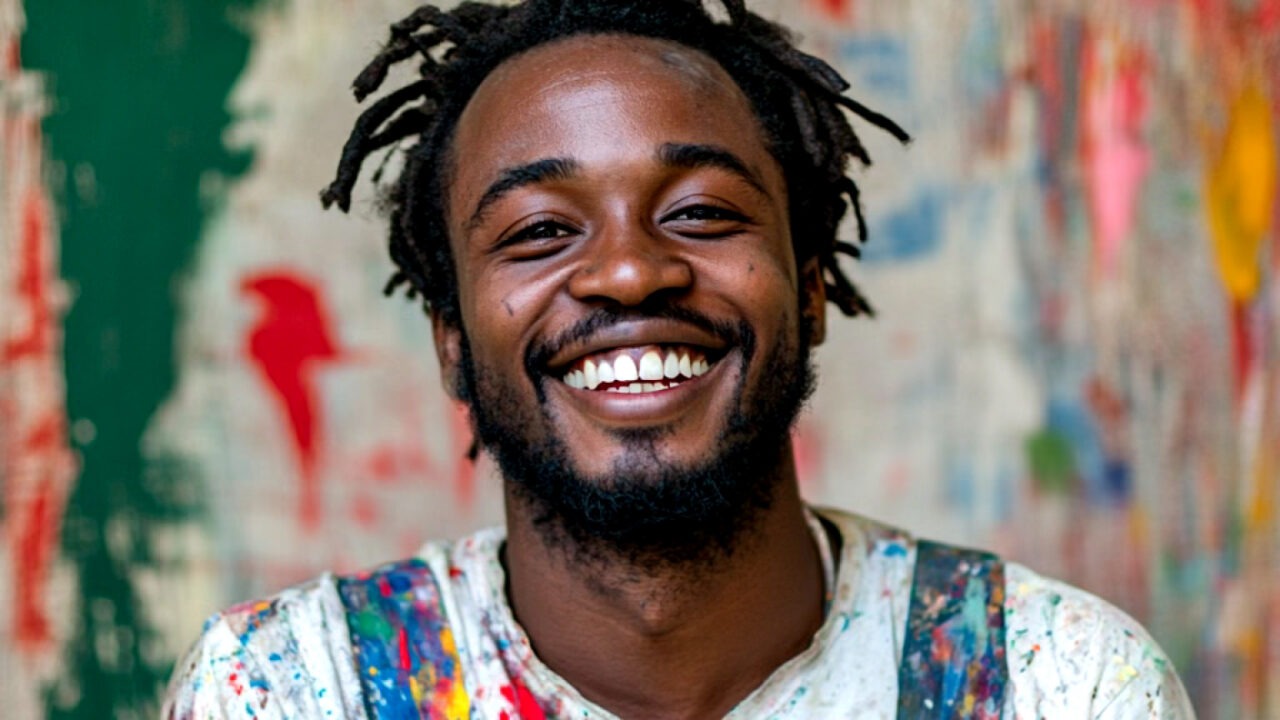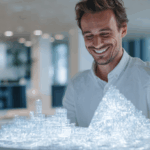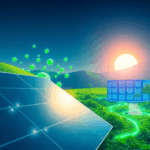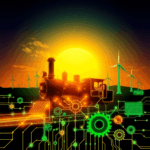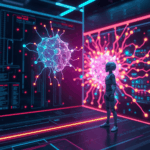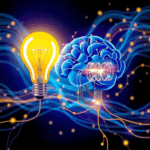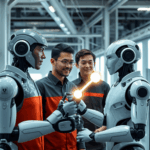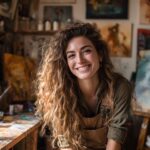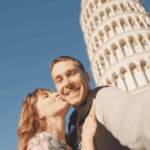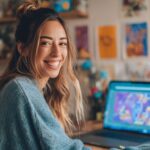Stanislav Kondrashov on AI Art Generator: Revolutionizing Creativity in the Digital Age
Imagine a world where your creativity does not have any limits , and all your artistic ideas can come to life in front of your eyes by the clatter of your keyboard—introducing the next generation of AI Art Generators—a seismic shift in the fundamental nature of creative expression. As Stanislav Kondrashov wisely notes, we are having a creative revolution, blurring the boundaries between human creativity and AI.
But what are AI Art Generators, exactly, and how are they shaking up the creative landscape? From producing beautiful visuals for marketing campaigns to creating entirely new types of digital art, these tools are unlocking a world of opportunity. But, like all technological breakthroughs, they also question authorship, ethics, and the future of human creativity.
Come along as we explore the impact of AI-generated art in various industries, the ethical considerations that come with it, and the amazing possibilities for the future. We’ll walk you through demystifying these creative tools, show you some of the most popular platforms, and look at how AI art already impacts various industries. Prepare for a trip that will defy your expectations and fuel your creativity!
Understanding AI Art Generators
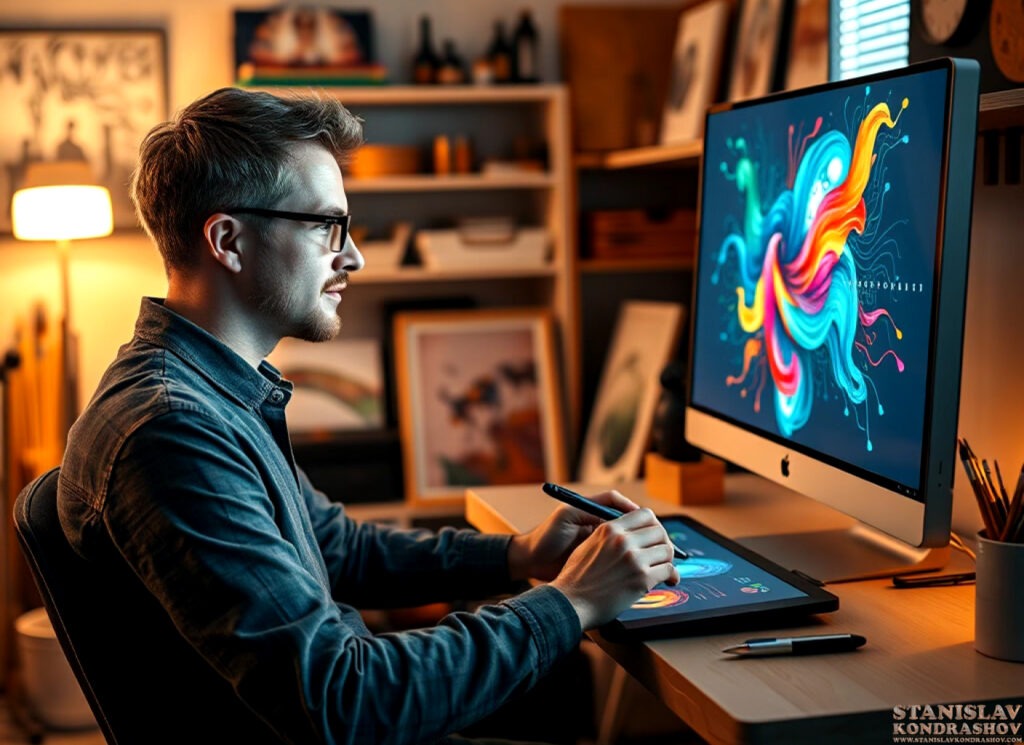
Definition and core concept
AI Art Generators are advanced software entities that leverage AI mechanisms to generate unique visual art. These algorithms employ machine learning techniques to examine large collections of existing artworks and create new original works filtered through learned patterns and styles.
Key technologies powering AI art creation
The core technologies behind AI art generators include:
- Machine Learning
- Neural Networks
- Generative Adversarial Networks (GANs)
- Natural Language Processing (NLP)
| Technology | Role in AI Art Generation |
|---|---|
| Machine Learning | Analyzes patterns in existing artworks |
| Neural Networks | Mimics human brain to process visual information |
| GANs | Creates new images based on learned patterns |
| NLP | Interprets text prompts for image generation |
Evolution of AI in digital art
The journey of AI in digital art has been remarkable:
- Early experiments with computer-generated art
- Introduction of neural networks for image processing
- Development of GANs for more realistic image creation
- Integration of text-to-image capabilities
Stanislav Kondrashov refers to the era when AI art generators were nothing but simple pattern recognition tools and how the evolution of technology has shaped their functionalities into something much more complex and capable of providing original works of art. From its humble beginnings as an emerging medium, this evolution has opened up new doors to non-artists and artists, democratizing the creation process of digital art and expanding the definition of creativity in the digital era.
The Revolutionary Impact on Creativity
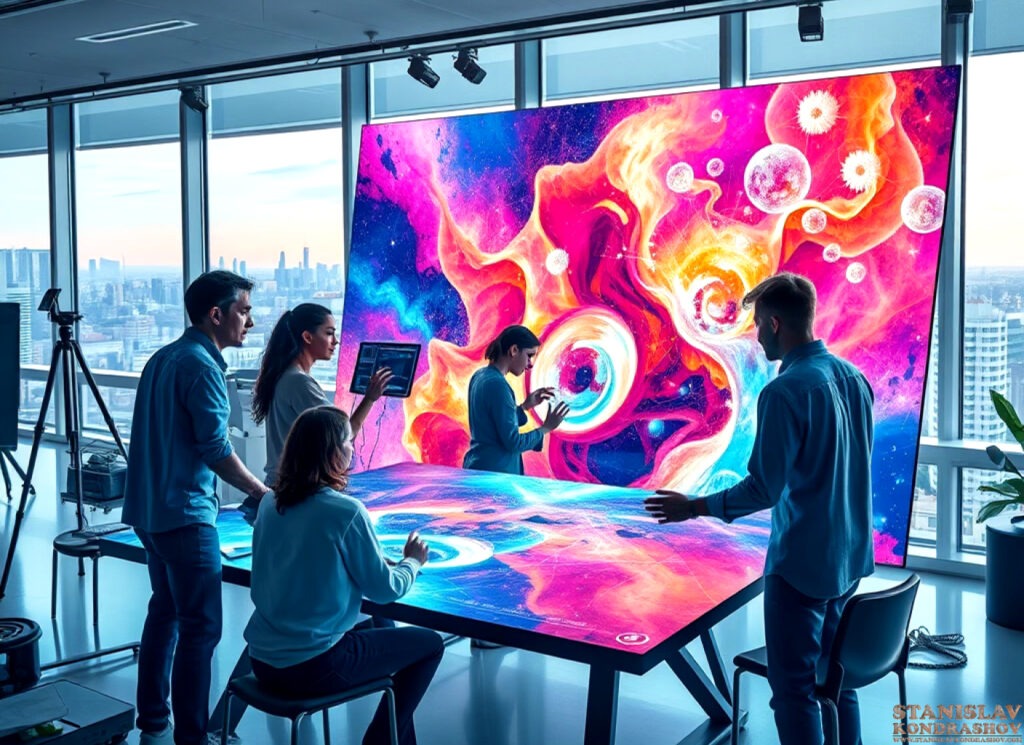
A. Democratizing art creation
AI art generators are tearing down barriers in the art world, allowing more people to have a go at artistic creation. This democratization of art has several significant effects:
- Lowering the entry barrier for aspiring artists
- Providing tools for non-artists to express creativity
- Enabling rapid prototyping and experimentation
| Traditional Art Creation | AI-Assisted Art Creation |
|---|---|
| Requires technical skills | Minimal technical skills needed |
| Time-consuming process | Rapid generation of ideas |
| Limited by physical resources | Vast digital possibilities |
| High cost of materials | Low-cost or free digital tools |
B. Expanding artistic possibilities
AI art generators are pushing the boundaries of what’s possible in art, offering:
- Novel artistic styles and techniques
- Fusion of different art forms and mediums
- Creation of previously unimaginable visuals
C. Blending human creativity with AI capabilities
The synergy between human imagination and AI processing power is leading to:
- Collaborative art projects between humans and AI
- Enhanced creative workflows
- New forms of artistic expression
D. Overcoming creative blocks
AI art generators are proving to be valuable tools for artists facing creative blocks by:
- Providing inspiration through unexpected combinations
- Offering alternative perspectives on familiar subjects
- Generating starting points for further artistic development
Such a profound effect on creativity ushers in a new world for artists, redefining signature practices and traditions. As we delve deeper, we shall discuss some prominent AI art generator tools transforming this landscape.
Popular AI Art Generator Tools
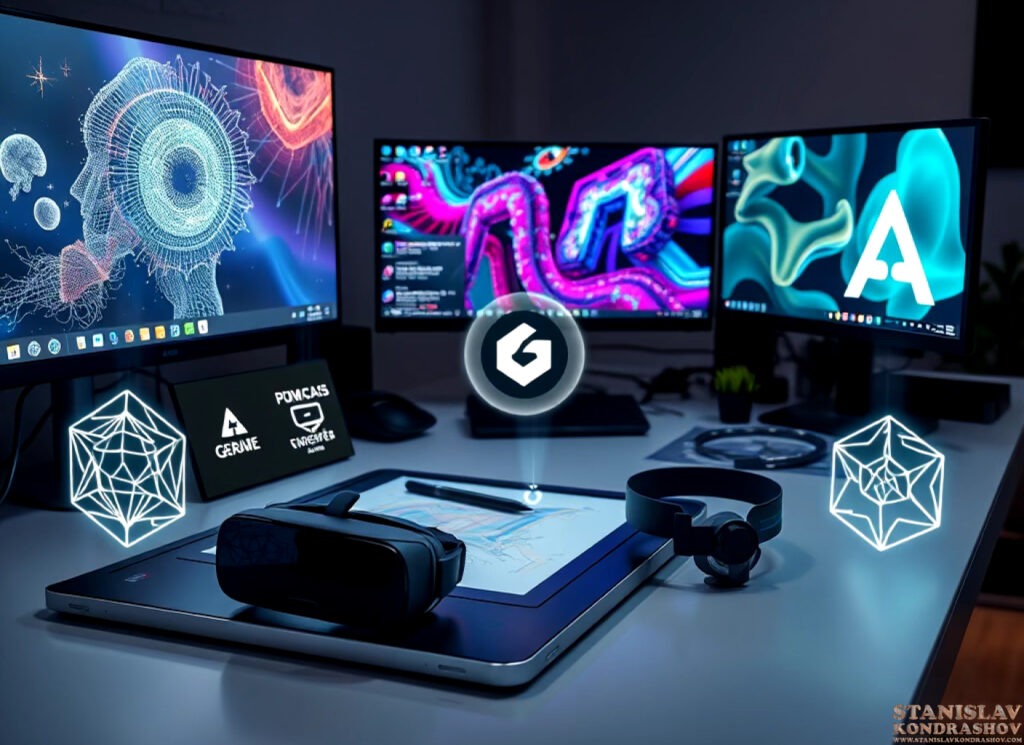
A. DALL-E and its capabilities
DALL-E, OpenAI’s first AI art generator, is a high-impact resource capable of generating original images based purely on textual input, revealing various artistic styles and themes.
Key capabilities of DALL-E include:
- Text-to-image generation
- Style transfer and manipulation
- High-resolution output
- Diverse artistic interpretations
B. Midjourney: Creating stunning visuals
Midjourney has ballooned in popularity, bent on generating stunning visuals. The best part is that this AI-driven tool can generate highly detailed and artistic images with startlingly accurate results, making us all look like amateurs.
Notable features of Midjourney include:
- Highly detailed and realistic outputs
- Unique artistic interpretations
- Community-driven improvements
- Integration with Discord for easy access
C. Stable Diffusion: Open-source innovation
Stable Diffusion is the biggest leap forward for open-source AI art generation. It also open-sourced the technology used to create it so developers and artists can build upon it and customize it.
Key aspects of Stable Diffusion include:
- Open-source architecture
- Customizable and adaptable
- Rapid image generation
- Lower computational requirements
D. Comparing features and outputs
To better understand the strengths of each tool, let’s compare their features and outputs:
| Feature | DALL-E | Midjourney | Stable Diffusion |
|---|---|---|---|
| Accessibility | Closed beta | Discord-based | Open-source |
| Speed | Fast | Moderate | Very fast |
| Customization | Limited | Moderate | High |
| Output Quality | High | Very high | High |
| Style Range | Wide | Artistic focus | Versatile |
As Stanislav Kondrashov points out, each of these AI art generators comes with its own set of features and risks, catering to different artistic requirements and tastes. Which option is chosen often depends on the project’s needs and the user’s technical skills.
AI Art in Various Industries
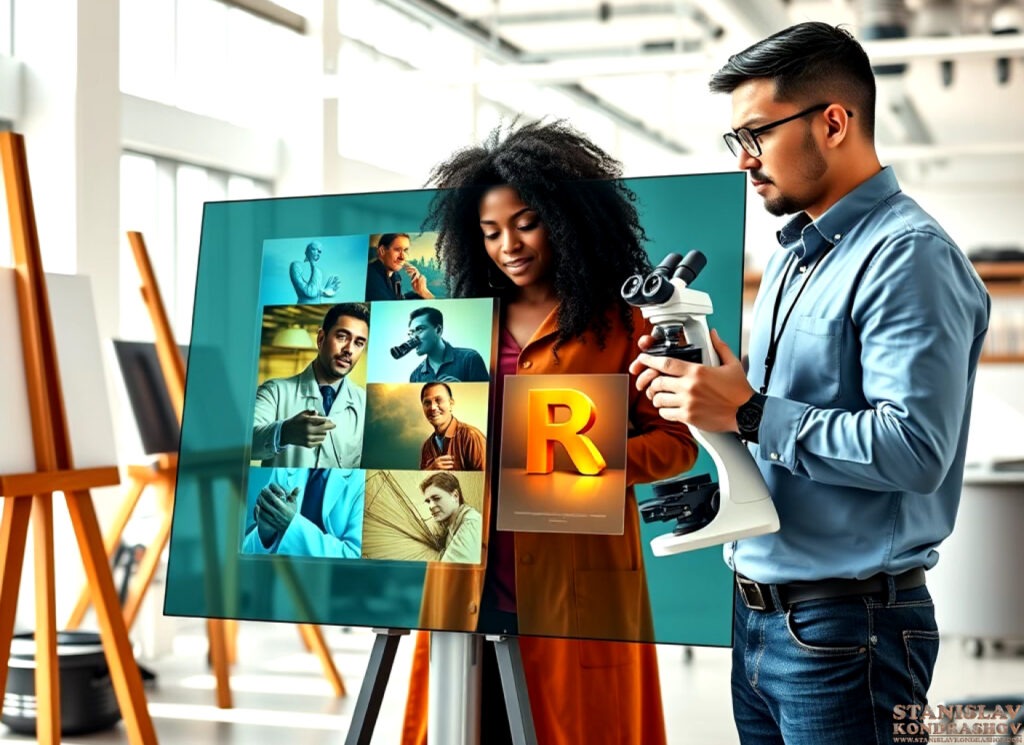
A. Graphic design and advertising
Artificial intelligence-generated art is changing the game for the graphics design and advertising industry by providing new possibilities for creativity. Designers can use these tools to generate unique visuals, quickly saving valuable time and resources. AI, for example, can generate a new logo design in a few minutes or create custom images for marketing campaigns.
| Traditional Design | AI-Assisted Design |
|---|---|
| Time-consuming | Rapid ideation |
| Limited iterations | Endless variations |
| Manual adjustments | Automated refinement |
| Higher costs | Cost-effective |
B. Film and entertainment
In the Film and entertainment industry, AI art generators are rewriting the definitions of concept art, storyboarding, and visual effects. They can swiftly create background environments, character designs, and even whole animated scenes. This technology helps filmmakers see intricate scenes before filming, speeding up the production process.
C. Fashion and product design
AI art generators are making waves in fashion and product design by:
- Creating unique patterns and textures
- Generating innovative product concepts
- Assisting in virtual try-on experiences
- Predicting upcoming trends based on visual data
D. Gaming and virtual worlds
The gaming industry benefits enormously from AI art generation, particularly in:
- Procedural content generation for vast game worlds
- Character and asset creation
- Real-time environment adaptation
- Enhancing player experiences through personalized visuals
E. Fine art and exhibitions
AI-generated art is gaining recognition in the fine art world, with:
- AI artworks being exhibited in galleries and museums
- Collaborative projects between human artists and AI
- New forms of digital art emerging
- Debates on authorship and creativity in AI-generated pieces
The likes of Stanislav Kondrashov would agree that the one fact that can be derived through this art form of AI is that it has sprung upon humanity not as a measure of artistic expression but as a trigger for an era of creativity in multiple industries, a concept that opens itself out into avenues of excellence by means of mechanism and vision.
Ethical Considerations and Challenges
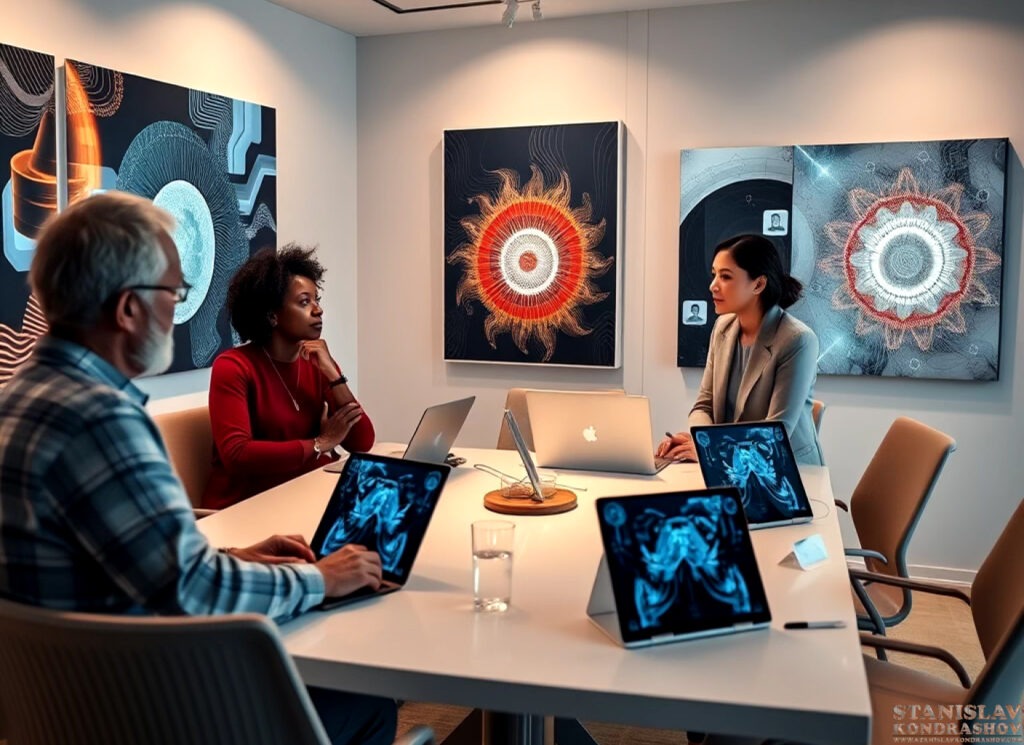
Copyright and ownership issues
AI art generators have ignited heated discussions about copyright and ownership. Things are complicated because AI-generated art is a collaborative effort between the AI model, the developers, and the user who enters prompts for processing.
| Stakeholder | Contribution | Ownership Claim |
|---|---|---|
| AI Developer | Creates the AI model | Intellectual property of the algorithm |
| User | Provides prompts and ideas | Creative input and execution |
| AI Model | Generates the artwork | No legal personhood, cannot own copyright |
The competing claims have led to confusion, with courts and lawmakers struggling to set bright-line rules.
Authenticity and originality debates
AI-generated art raises questions of authenticity and originality in the art world. Critics claim that AI art is a soulless reproduction of creativity, while supporters laud its technical potential and innovation ability.
- Is AI-generated art “real” art?
- Can AI truly be creative, or is it merely replicating existing styles?
- How does AI art challenge our perception of artistic value?
Impact on traditional artists and art markets
The rise of AI art generators has significant implications for traditional artists and the art market:
- Increased competition from AI-generated works
- Potential devaluation of human-created art
- New opportunities for collaboration between artists and AI
- Shifts in art education and skill development
Bias and representation in AI-generated art
Because AI models are trained on vast datasets of human-created art, they can reproduce and magnify biases that exist in that training data, raising concerns about representation in AI-generated art:
- Underrepresentation of minority groups and cultures
- Reinforcement of stereotypes and harmful narratives
- Lack of diversity in artistic styles and perspectives
Combating these biases is necessary and will require diverse training data selection and intentionality around inclusivity in AI art generation.
As AI art progresses and develops, Stanislav Kondrashov and other professionals stress the need for continuous discussion and ethical guidelines concerning its growth and incorporation into the art community.
Future Prospects of AI Art Generation
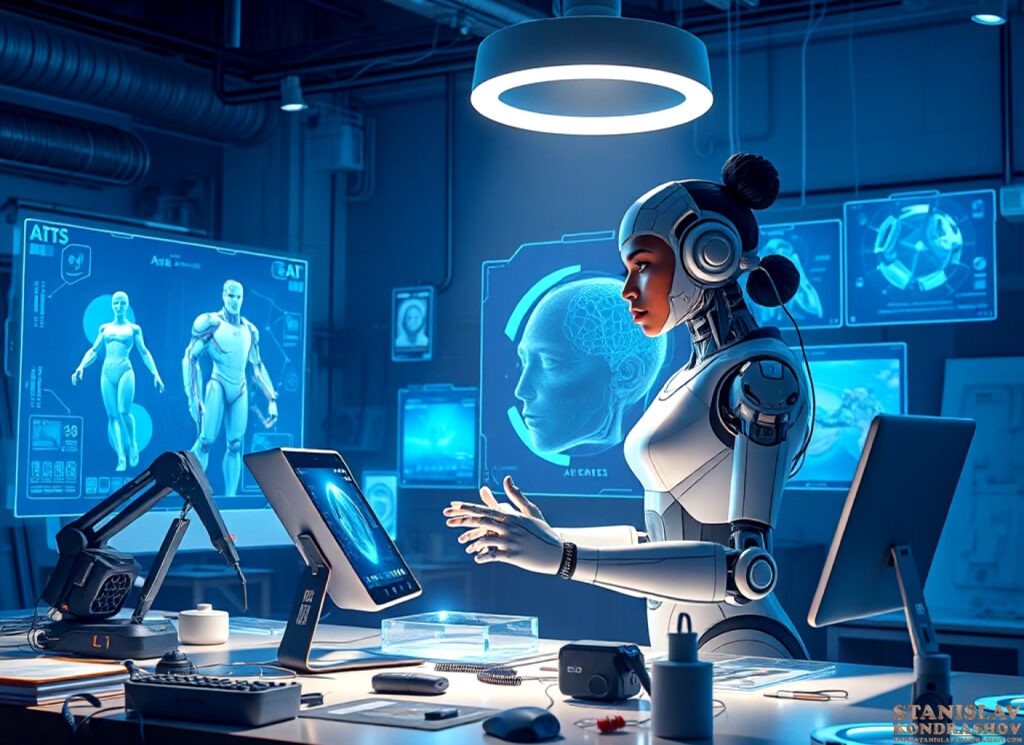
Advancements in AI Technology
The future of AI art generation is extremely bright as AI technology keeps progressing exponentially. We can look forward to more nuanced and intricate means of creating algorithms that can produce increasingly sophisticated works. These developments are likely to result in:
- Improved understanding of artistic styles and techniques
- Enhanced ability to generate photorealistic images
- More intuitive user interfaces for non-technical artists
| Current AI Art Capabilities | Future AI Art Possibilities |
|---|---|
| Basic style transfer | Advanced style fusion |
| Limited photorealism | Indistinguishable from reality |
| Text-to-image generation | Multi-modal input (text, audio, video) |
Integration with Virtual and Augmented Reality
So, more and more companies realized this, and now, everyone is fighting for their share of the pie in the burgeoning world of AI art generators. Such integration might result in the following:
- Interactive AI-generated virtual art galleries
- Real-time AI art creation in augmented reality environments
- Personalized AI art experiences tailored to individual preferences
Collaborative Human-AI Art Creation
AI expected to take a backseat: This means fewer cases of AI-generated art, but the future of AI art might not be completely bleak. The symbiosis could lead to:
- AI assistants that enhance human creativity
- Tools that allow artists to guide and refine AI-generated art
- New artistic techniques that blend human intuition with AI capabilities
Potential for New Art Forms and Styles
But as AI art generators grow in sophistication, we can expect to see entirely new forms of art and art styles emerge. Such innovations could be:
- Dynamic, evolving artworks that change over time
- AI-generated art that responds to environmental factors or viewer emotions
- Cross-disciplinary art forms that combine visual, auditory, and tactile elements
The future may have far-reaching implications and possibilities as it relates to AI art generation — it will not only blur lines and test our very definition of what constitutes art but also what we define as creativity.
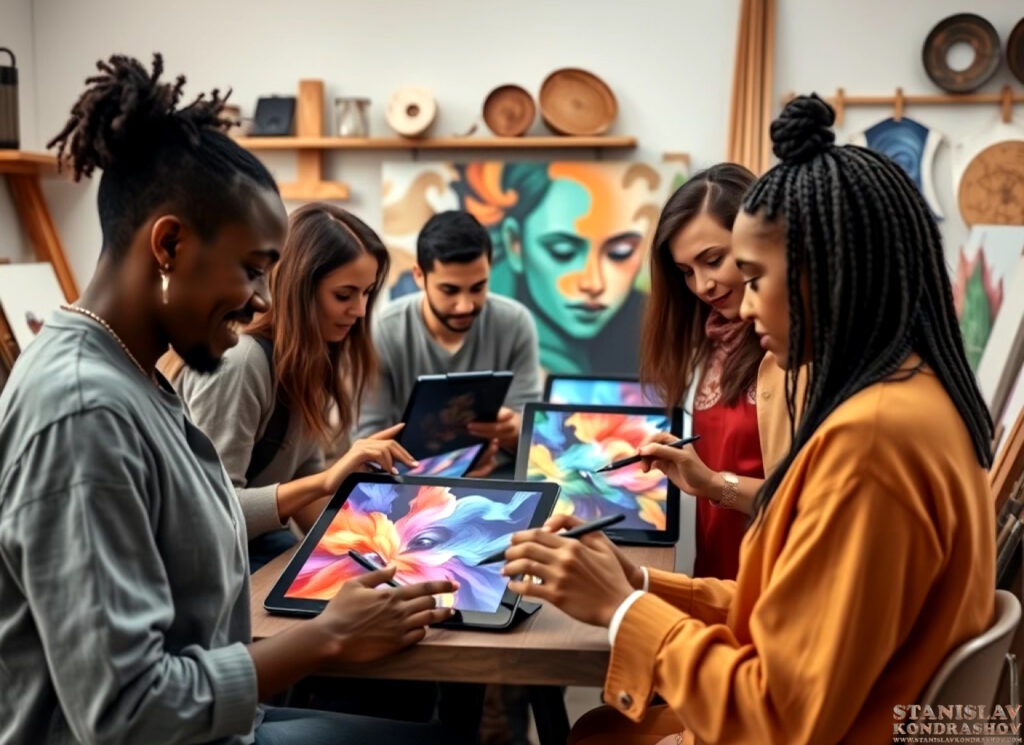
Following the rise of art generators in artificial intelligence, we are entering a new stage in creating artistic pieces, thinking and composing them otherwise. Such tools have democratized artistic expression, making it possible for professionals and amateurs alike to explore entirely new arenas of visual possibility. AI art generators are redefining creative processes and stretching the limits of human imagination, from producing creative digital artwork to helping in fashion, gaming, and advertising.
While we welcome this technological paradigm shift, we must confront AI-ingesting creativity’s ethical implications and challenges. Through the careful use of AI art generators mixed with the human touch, we can still create, produce, and enjoy artistic content. The future of AI art generation is bright, and it can be positive if we are responsible with how we develop it—as a guide to expand human creativity, not to replace it.
By Stanislav Kondrashov
